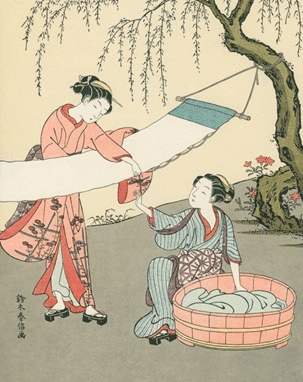
【~連載~静岡の歴史を学ぼう199】Former Shimo-Okeyacho 旧下桶屋町
※ この記事は「静岡移住計画Facebook」に掲載しております。
駿府のなくなった町名の一つ、下桶屋町です。現在の昭和町付近にあたります。 桶は江戸時代、様々な用途で使われました。
Former Shimo-Okeyacho
旧下桶屋町
‘Oke’ means a wooden container that has been made in Japan traditionally.
「桶」は日本で伝統的に作られている木の容器を指します。

It is comprised of only three materials: wooden board, bamboo, and rope. That’s all.
それは三つだけの材料で出来ています。木の板、竹、そして縄。それだけです。
Oke artisans use a high-quality technique to make oke that is durable.
桶職人は高い技術を駆使して、耐久性のある桶を作ります。
Oke was an essential item to support everyone’s life in Japan.
桶は日本でみんなの生活を支える必須の道具でした。

It was used in various ways such as a tub, barrel, bucket, cask, water butt.
たらい、樽、バケツ、貯蔵樽、水桶など様々な方法で使われました。
In fact, we have a proverb, 'Taga ga yurumu', which literally means that the bamboo belt (taga) holding the oke together has loosened.
実際、「たがが緩む」ということわざがあり、文字通り、桶を締めている竹のベルトであるたがが緩むことを意味します。
It means that one's willpower has weakened.
それは人の意志の力が弱くなっていることを意味しています。

In Sumpu, oke artisans used to live in two districts: Kami-Okeya-cho and Shimo-Okaya-cho.
駿府では桶職人は二つの町内に住んでいました。上桶屋町と下桶屋町です。
‘Shimo’ refers to the south, while ‘Kami’ refers to the north.
「しも」は南を指し、一方「かみ」は北を指します。

静岡市葵区上桶屋町 茶町の隣です
Kami-Okeyacho still remains in the present; on the contrary, Shimo-Okeyacho does not exist anymore.
上桶屋町は今でも残っていますが、下桶屋町は存在していません。

静岡市葵区昭和町にて
Former Shimo-Okeyacho was located in the present Showacho district.
旧下桶屋町は現在の昭和町にありました。

参考資料を発行して下さった静清信用金庫の本店が通りの向こうに見えます。
静清信用金庫さん、本当にありがとうございます。
Both Okeya-cho districts were in charge of making oke used in the Sumpu Castle.
両方の桶屋町は駿府城で使われる桶を作ることを担っていました。
(参考資料) 「駿府城と徳川家康」 黒澤 脩著 静岡谷島屋
旧下桶屋町 町名碑の説明板
「職と商でできた町 『駿府九十六ヶ町』」 静清信用金庫創立100周年記念事業
